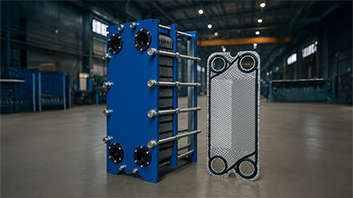When it comes to heating, cooling, and energy efficiency, one of the most important pieces of equipment we encounter is the plate heat exchanger.
So, what does a plate heat exchanger do? Why is this device so widely used? In which areas do we come across it?
In this article, we will examine the purposes of use, working principle, and advantages of plate heat exchangers in both technical terms and plain language.
What is a Plate Heat Exchanger?
Structure of a Plate Heat Exchanger
A plate heat exchanger is a type of heat exchanger that enables heat transfer between two different fluids without them coming into contact, formed by assembling thin metal plates together.
Working Principle
Thanks to these plates, two fluids with different temperatures exchange heat without mixing with each other. This preserves hygiene and increases system efficiency.
Why Choose a Plate Heat Exchanger?
Plate heat exchangers have high efficiency and a compact design, making them suitable for a wide range of applications from industrial systems to buildings.
What Does a Plate Heat Exchanger Do?
Enables Heat Transfer: Plate heat exchangers allow heat to pass from a hot fluid to a cold fluid, enabling energy savings.
Used in Heating and Cooling Systems: They are effectively used in cooling units, boiler rooms, and central heating systems.
Separates Systems from Each Other: They ensure heat exchange between two systems with different pressure, flow rate, or contamination levels without mixing. This is especially important in HVAC systems.
Energy Saving
The goal is to achieve maximum efficiency with minimum energy. This provides environmentally friendly solutions and reduces operating costs.
Where Are Plate Heat Exchanger Used?
HVAC Systems: Widely used in heating, ventilation, and air conditioning systems.
Industrial Plants: Preferred in factories, process lines, and power plants for safe and efficient heat transfer.
Food and Beverage Industry: Frequently used in the food sector where hygienic conditions are critical.
Why Choose a Plate Heat Exchanger?
High heat transfer efficiency
Modular structure (number of plates can be adjusted)
Easy maintenance and cleaning
Space-saving compact design
Energy savings with low operating cost


